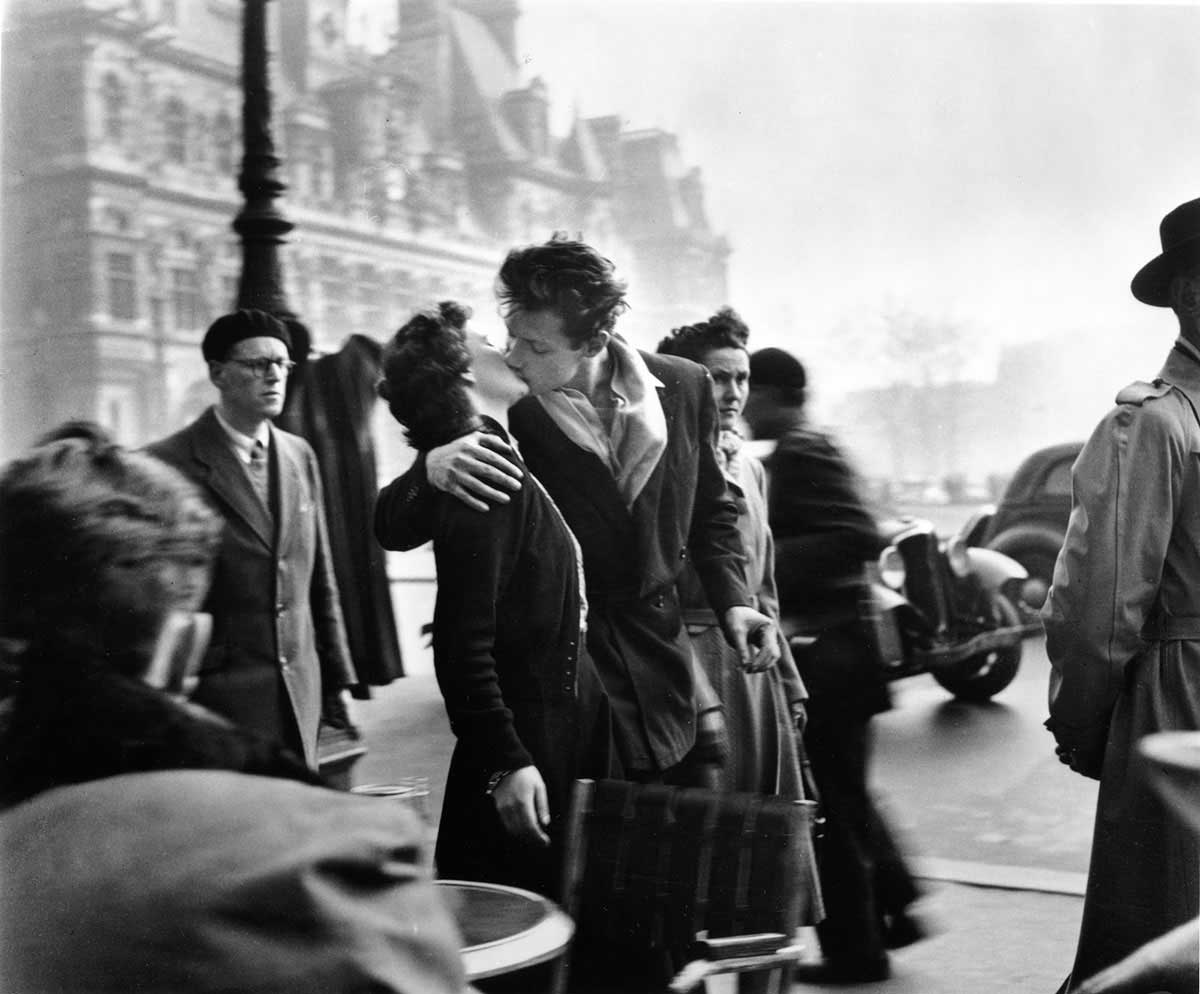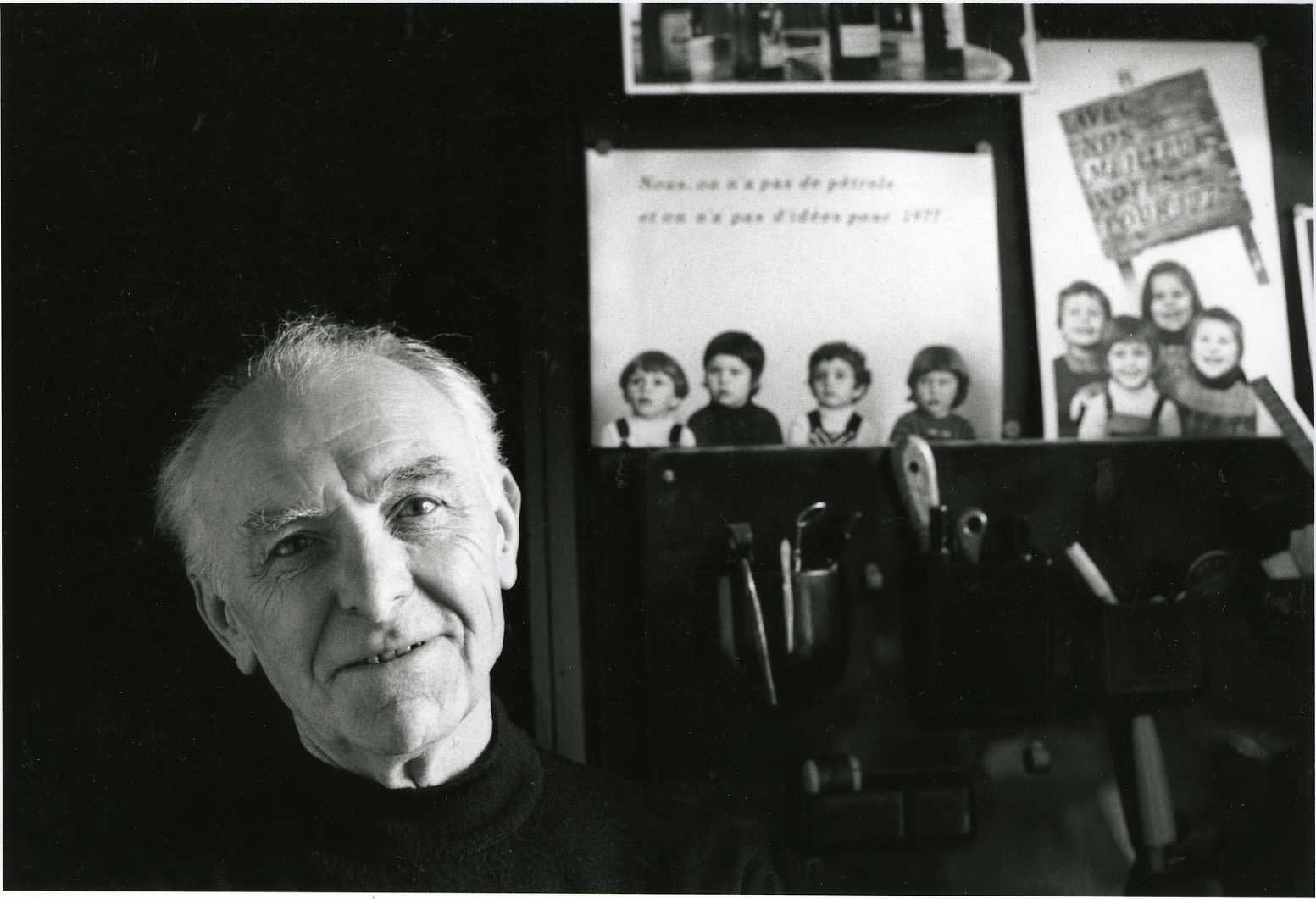Kiss by the Hôtel de Ville by Robert Doisneau; This photograph is one of the icons of eternal love. A young man stands in the street, surrounds his girlfriend with his arm and kisses her passionately in front of the Paris City Hall, stopping the world around him.
France has been freed from the second great war and its capital resurfaces between mists and desires that, the master of photographers Robert Doisneau is responsible for immortalizing in black and white shots. But the backroom of the hypnotic photography, perhaps one of the most reproduced in history, was not “a ray of unexpected beauty”, as many had believed.

As in all previous warlike conflicts, when World War II came to an end, the entire world deeply longed to return to normal. Everyday life was then a more valuable asset than gold; and the fact that the end of this lucid period gave way to “humanist photography” is proof of that.
European photography focused on subjects such as children, love, couples; symbols of the future and optimism that could help regain hope after the devastating reality of War.
This is how in 1950, photographer Robert Doisneau was on a terrace of a bar with his Rolleiflex camera. He watched closely the people who passed through the street and among the crowd, he could distinguish a couple in love who, unconcerned with everything around him, moved forward kissing passionately.

Quickly, the photographer took his camera and shot this snapshot known as ‘Kiss by the Hôtel de Ville’. The story, told like this, is really precious; the environment of Paris, the beauty of the moment, the passion of young people, the feeling of unconcern mixed with the day-to-day life of the city … everything was too perfect.
The image maintained an ‘journalistic document’ status until the mid-1980’s, when thousands of copies of the photo were printed and distributed in poster format. Then, the photography became famous throughout the world, becoming an icon of romanticism attributed to the capital of France. It was then that the controversy also arose about whether the moment captured by Doisneau was planned or natural.
I would never have dared to photograph people like that. Lovers kissing in the street, those couples are rarely legitimate.
Robert Doisneau
The truth is that, this photograph filled with bitterness the last years of its author’s life. In 1988, with 76 years, the great French photographer had to reveal the secret he had kept for so long: he had hired a couple from the School of Comedians for a commission from Life magazine, which was looking for an image to capture love after the War, in a Europe that was rising thanks to the Marshall plan.
This happened because a couple, for their part, and a woman on her own, declared themselves the photographed protagonists and demanded the payment of rights for the exploitation of their image. When the protagonist, Françoise Delbart, denounced him for image rights, the man in the photo, Jacques Carteaud, defended Robert. They had already charged for the famous kiss. In order to get rid of the legal situation, he was forced to confess.
In spite of everything, the image does not lose any value. In fact, in any corner of Paris you can find something related to it. People continue to admire this kiss as a symbol of love.
The scene shows a couple in front of the Paris city hall giving a passionate kiss, while people pass around without realizing it, in a hurry or totally absent. The elegant pose of lovers seems oblivious to everything other than love, they are in the center. On them rotates all the composition, all the arrangement of the elements. It is the fifties and they are the hope of the postwar period, of a liberated Paris that is beginning to recover.
This image is in fact able to tell us about an extraordinary visual intuition and a personal way of seeing and interpreting the Paris of the time. And over the course of his long career as a street photographer, Doisneau has given us many of the images of the Ville Lumière and its inhabitants.
Today, the constructed photo is considered to be a great artistic contribution where the creative process is as valuable as the “decisive moment” notion of Henri Cartier-Bresson.






